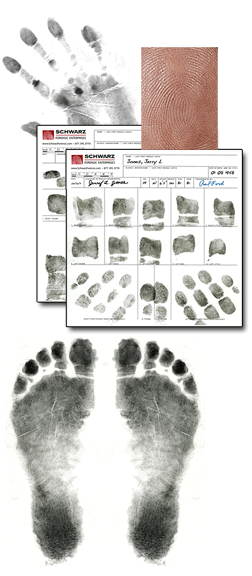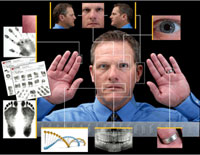Modes of Identification: Friction Ridge Skin
 These methods of identification use friction ridge skin surfaces of the fingers, joints, palms, and feet that are unique to every individual. Friction ridge skin on the feet is highly likely to survive a catastrophic event, and is often the best way to identify remains after a disaster.
These methods of identification use friction ridge skin surfaces of the fingers, joints, palms, and feet that are unique to every individual. Friction ridge skin on the feet is highly likely to survive a catastrophic event, and is often the best way to identify remains after a disaster.
Baseline biometric data from friction ridge skin can be highly valuable in kidnapping investigations in providing reference comparisons for latent prints. It can help to develop leads to focus the investigation and allow successful rescue.
Friction ridge skin is useful in quickly identifying victims in disaster situations, and may be the only accurate method given available local resources.
SFE experts will make multiple recordings of all friction ridge skin using our specialized cards, to obtain the clearest and most comprehensive record available. The specific data collected will be tailored to your needs.
This method of identification has a number of advantages (Pros)
- Friction ridge skin and the association patterns and prints are with you from the time of birth until after death, and do not change over time.
- This type of analysis can be done even if there is trauma to friction ridge skin surfaces.
- The method is very precise, fast, and cost-effective
- Friction ridge skin analysis yields the most successful identification rate
- The data needed for identification is easy to gather in the field and requires no expensive technology; the necessary information can be easily transmitted electronically
- Very little friction skin is needed to conduct identification – less than one square centimeter can be tested
- Biometric identification friction skin analysis is more comprehensive than what is traditionally done in the forensics setting, where joints, palms, fingertips and sides of fingers are not routinely collected or are of low quality. The SFE method of collection is designed to record all friction skin on the hands for the most complete and accurate record possible.

